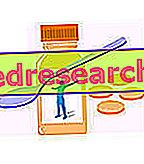Definition
Off-label drugs are drugs that are used, in clinical practice, for the treatment of diseases and disorders not included in the summary of product characteristics (document authorized by the Ministry of Health that provides information for health professionals on how to use a medicine in safe and effective way).
Therefore, off-label drugs are already registered and approved, but for different therapeutic indications than those for which they are prescribed instead.

Off-label drugs can be used on both adult and pediatric patients and are used in different branches of medicine. However, areas such as oncology, psychiatry, neurology, hematology, transplantation and rheumatology are the areas in which they are mostly used.
The AIFA (Italian Drug Agency) constantly draws up and updates a series of lists containing all those drugs for which off-label use is also envisaged. These lists can be consulted directly on the AIFA website and at the following link:
//www.agenziafarmaco.gov.it/it/content/farmaci-label
Statement
Off-label use of drugs can only be carried out in certain cases and only by following very specific regulations.
The laws so far issued on the subject and currently in force allow the doctor to prescribe certain drugs for a different use than the one for which the medicine was approved, but only on the basis of documented scientific evidence and only in the case in which therapeutic alternatives are not available. best.
In truth, there is no real law that clearly and completely governs the prescription and use of off-label drugs. However, there are some laws and some decrees that provide guidance on this. These laws and decrees are:
- Law 648/1996;
- Law 94/1998 on the special use of drugs (also known as "Legge Di Bella");
- Ministerial Decree 18 May 2001;
- Ministerial Decree 8 May 2003.
Doctor's responsibility
As mentioned, the law allows the doctor to prescribe the administration of off-label drugs under his direct responsibility.
However, since it is a use of drugs for clinical conditions not officially approved, the doctor has the duty to inform the patient (from whom, by law, he must then obtain the consent), providing indications on the reasons that push him to use drugs label and on the potential risks associated with them.
risks
Although supported by scientific evidence, the use of off-label drugs is connected to potential risks for the patient who takes them. In fact, the efficacy and safety of use of these active ingredients have been studied and tested in patient populations in conditions different from those for which the off-label drug is instead prescribed.
Therefore, patients may respond to treatment with off-label drugs unexpectedly and new undetected side effects may also arise.
Unfortunately, however, in some cases the doctor cannot behave differently and the use of off-label drugs is the only therapeutic strategy available.
Improper use
As we have seen, for some drugs the so-called off-label use can be carried out, but only following the regulations in force and only if their prescription and their administration take place under the direct control of the doctor.
However, it may happen that the off-label use of drugs is improperly carried out (sometimes on the initiative of the patients themselves), even when the conditions for doing so are not met.
This use of non-labeled, unregulated and unapproved off-label drugs is carried out, often and willingly, to save on the cost of the drugs themselves.
To clarify this concept, we can give a simple example: some patients to save on the cost of Propecia® (a drug containing the active ingredient finasteride at a concentration of 1mg and used in the treatment of androgenetic alopecia), instead of buying this medicinal specialty, buy the 5 mg finasteride tablets (whose indications concern the treatment of benign prostatic hypertrophy and NOT the treatment of androgenetic alopecia) and then divide them into 4 or 5 parts, taking one a day.
This wrong procedure is basically done to save money, both because finasteride 5 mg is now also available in the form of a generic drug - consequently it costs less in proportion to Propecia® - and because it can be prescribed by your doctor against the National Health System ( although this should not be done, since the patient in question is affected by androgenetic alopecia and not by benign prostatic hypertrophy, a pathology for which, instead, the medicine can be dispensed at the expense of the NHS).
In my personal and professional opinion, this habit is strongly discouraged and should be avoided. In fact, by dividing a tablet into five parts it is not possible to know the exact amount of active ingredient that is being taken and it is therefore possible to risk either taking a too low dose of drug (with the possibility of suffering a therapeutic failure), and to take excessive dosages of medicine that can cause an increase in side effects, the consequences of which can be unpredictable and even very serious.
In fact, despite the possible savings, it is not always advisable to divide the tablets into any type of therapy, except for the case in which the doctor does not advise him due to the lack on the market of pharmaceutical formulations having the adequate dosage, a phenomenon which in any case nowadays it is quite rare.



